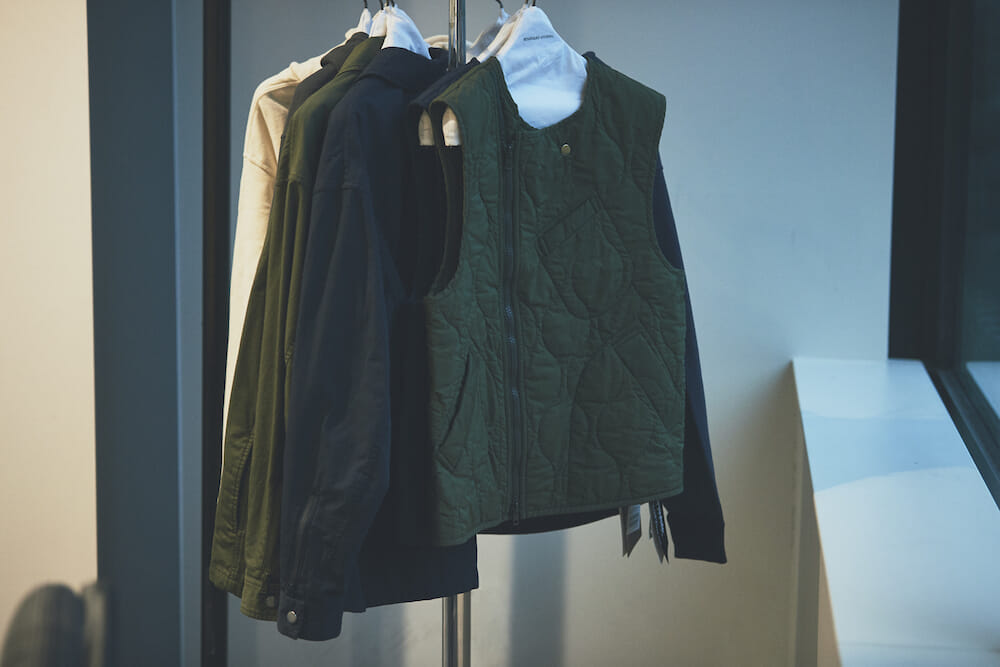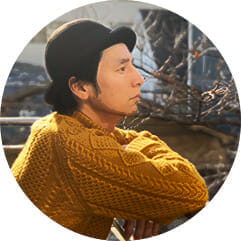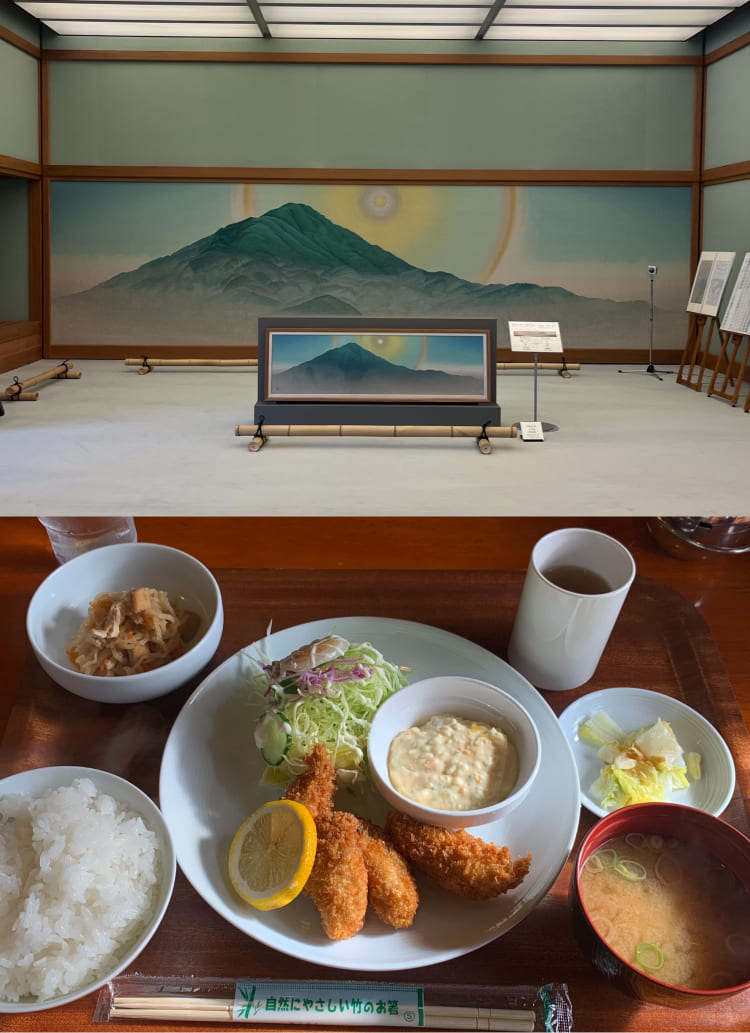The Standard Journal, which we covered in HOUYHNHNM's during its first edition, has finally reached its seventh edition.
Among the creators of the seventh installment of the "SeventhNon-nativeThe name of Mr. Takayuki Fujii of the "Huinamu" brand is listed in the "Huinamu" section of the website. He is a well-known brand and designer in HOUYHNHNM's, but was anyone surprised to see him here?
We spoke with Keiji Kaneko of "Reshop," a conceptor of the "Standard Journal," and Mr. Fujii about this point.
PROFILE
Born in 1976 in Nara , Japan. After dropping out of art college, he worked as a sales representative at several stores including BEAMS and SILAS before becoming a designer at nonnative in 2001. He proposes Tokyo-based standards that are adaptable not only to urban life, but also to various places and situations.
PROFILE
After working as a buyer for the select store "Edifice", he became independent. After working on his own, he launched "Reshop" in 2015 , and opened "Reshop Shibuya" in July 2020.
How did you come up with Mr. Fujii's name for this project? At first glance, there seemed to be no connection between BAYCREW'S and JOURNAL STANDARD and Mr. Fujii.
Fujii: Yes, I don't have any . So I thought they must have run out of material (laughs).
Kaneko: No, no, that's not what I meant (laughs). (laugh) . I was rather too afraid to mention his name. However, I myself have not had any contact with Mr. Fujii until now.
FUJII: Yes, that's right. We have never met. I was working around a lot of my friends, but I am not the type of person who would ask someone for an introduction, so I was wondering if we would meet someday. . So, I accepted this offer because I would be able to meet Mr. Kaneko.
Kaneko: Many of the creators who have participated in "Standard Journal" in the past have been related to me, but I had no contact with Mr. Fujii, so I thought it would be interesting to know more about him. I wondered about the positioning of the "non-native" brand in the first place. I also wondered about the positioning of the "non-native" brand. I was also surprised to find that no one around me was dealing with the brand, so there were a lot of unknowns.
The beauty of this project is that it brings both sides together, isn't it?
Fujii: Yes, that's right. Usually, I think we do things in the context of a relationship where we usually have business dealings or synergies. . So, I was very surprised when I was approached.
Kaneko: In this project, it is important to have a somewhat objective, bird's-eye view. In that sense, I had high hopes for Mr. Fujii's perspective.
Fujii: It is true that people are now looking at clothes or fashion from various angles. Corona is a major reason for this change. I thought a lot about what sells, what does not sell, what is fun, what is not fun, what is cool, what is not cool, and so on. As I reduced everything to zero, I gradually began to see what I should be doing. It was while I was thinking about this that I was approached.
. so the timing was perfect. So we wanted to have the first meeting, and the subject this time was a vest, a parka, and a blouson.
Kaneko: Yes. Since Mr. Fujii makes total items, I was wondering if he would be able to make any item quickly and easily.
FUJII: That may be true.
This time, it was your idea to work with Mr. Miyao, who is in charge of planning at "BAYCREW'S." Please tell us again how you came up with this idea.
Fujii: First of all, the video was a big factor. I just wanted to make the videos interesting (laughs).
Did the Kansai people's blood boil? (Laughter)
FUJII: I really want to give a punchline (laughs). However, if I had been asked to do this in the first volume, I might not have done it this way. It is already the seventh volume, and I was thinking about what I could do to keep the viewers from getting bored. So, I wondered if it would be better to look at the clothes from a different angle.
. Such a perspective is essential to this project, isn't it? . I think you are interpreting the proposition of redefining the standard by shifting it around a bit.
FUJII: Yes, that's right. So, in the next installment of the video, we will go out of this conference room and go to the restaurant.
Kaneko: Yes, it was the first time I went outside. We had agreed to shoot the Standard Journal video in a conference room, but Mr. Fujii's idea easily broke that agreement (laughs).
Fujii: I went to the store , and that is where I met Miyao for the first time.
Kaneko: Miyao was selected simply because he was the youngest (laughs).
Fujii: Yes. I wanted to work with the youngest.
How old are you, Mr. Miyao?
Fujii: I was 29 years old, but I turned 30 on the day of the shoot (laughs).
I was surprised to hear that you are not so young (laughs).
Fujii: For a planning position, it might be about the same after all.
Photo_Shunya Arai (model cut)
Mr. Miyao, you have been with the company for a little more than seven years now, since you started as a new graduate.
Fujii: It was interesting for me personally because I had never had the opportunity to meet the planners, or designers, of such a select store before. Also, it is not every day that Mr. Miyao gets a chance to meet Mr. Kaneko. I think it was good that we were able to make such an encounter.
You are a producer, aren't you (laughs)?
Fujii: Yes, I think that is true.
But, as a project that has been going on for a long time, it is important to have such a perspective. It is also important to keep the project itself fresh.
Fujii: Yes, that's right. And I think that would be better for "BAYCREW'S" and "JOURNAL STANDARD.
Kaneko: Well, there has never been a creator who thinks so much about the project. If possible, I thought, "I wish Mr. Fujii would join our side of the project (laughs). (Laughs) This time, Miyao was completely in the position of participating designer, wasn't he?
Fujii: Indeed . . so I think Miyao can speak better about the item this time.
I see (laughs).
Kaneko: In this project, when the items are completed, we have a review session with the members of "Standard Journal," and this time we asked Miyao to come as well (laughs).
What was the tension like for you this time around?
Fujii: I was wearing a mask the whole time, so I wasn't sure what to expect (laughs). (Laughs.) It was only when we were shooting the look that I got to see his face for the first time. But he was a very serious person.
Kaneko: He was very nervous from start to finish, but I heard that he was quite motivated.
That is true. It's the kind of group that is envied by my colleagues and seniors in the company.
Fujii: I'm glad I was young. I mean, youth is irreplaceable.
Kaneko: I also like the way they interact with each other. It's like a senior and a young person. Mr. Fujii would give him various instructions, and Miyao would prepare them before the next meeting, which made me smile.
Fujii: Thank you very much. . But you did exactly what we asked you to do. I don't think people who can't do that kind of thing can. Once again, I thought it was important to use people from the outside to get to know the people inside, as in a project like this one. After all, we are all designers, and each one of us has his or her own ideas.
Indeed. I think that select stores are now in a transitional stage in terms of their original brands. There is a trend to create original brands that do not carry the brand name. I think this is a good opportunity to rethink what is an original brand. It is a good opportunity to rethink what is original.
Kaneko: Yes, that's right. In that sense, there were many things that made me realize that this time.
What do you mean?
Kaneko: "Journal Standard" has a long history, so we have created a variety of items in the past. . In this case, we are reusing items and designs that already exist.
Is that an idea that came from Mr. Fujii?
Fujii: Yes . So we all went to the store together , to see the products.
Kaneko: I also try to find fabrics that are no longer available at the fabric store, in other words, fabrics that have been sold off.
Did it take shape?
Fujii: In the end, for various reasons, it was difficult to make all items with such fabrics, but I am always concerned about such things. My brand always uses new fabrics, so it is difficult for me to try such things.
Kaneko: I thought that Mr. Fujii's comments and ideas must have come from his 20 years of experience with "Non-Native" and his ability to see things from a wide variety of perspectives. I was impressed by his ability to see things from a wide range of perspectives.
Fujii: I used to work at BEAMS, so I have faced a lot of problems with original brands. Every store is thinking about how to balance the brands they purchase with their original brands, and what proportion they should have, and I am always thinking about this too. In our company, "non-native" is an original brand. Therefore, the brands we purchase and the original brands are always side by side.
. Yes, that's right.
FUJII: So they are literally placed next to each other in the store. And what I often hear is that there are original, similar designs out there, and people get angry about it. But I see it in a different way. And everyone is doing that kind of sampling.
. Yes, that's right. When you get down to it, what is an original design? I guess it comes down to "what is an original design?
Fujii: Yes. I wonder if it is okay to use old clothes as a design source, but not new ones. . So I think it's a matter of being imitated. I used to get angry (laughs). I also often go to the outlet stores. I think about a lot of things there.
I see. . Perhaps it is also important to know both sides of the coin of what sold and what did not sell.
Fujii: Yes, that's right. Also, I think, from a different vector than thinking about recycling, that the most important thing is to make sure that the products we make sell well. This is before considering things such as ecology. Therefore, this time, I made designs that everyone can wear for a long time.
. Let's talk about the product. Before that, in the model cut, you yourself are wearing the garment, but what was your goal in doing so?
Kaneko: This was also an idea from Mr. Fujii.
Fujii: I was looking at the previous installations and thought I wanted to do something different. . To do so, I decided to focus on the photographer. I did the styling and Miyao was the model (laughs). (Laughs.) I am glad that Toshiya Arai agreed to do it. It would have been impossible without Arai-chan.
Kaneko: Yes. The shooting location was just great, too (laughs).
Fujii: If we had kept going like that, it was almost as if we were going to end up with naked vests and the like (laughs). (Laughs.) But I think people who see this will think that "BAYCREW'S" has deep pockets. It's like they have room to grow. People don't have a lot of time to spare nowadays, so it is important to be able to do something like this.
Indeed . I think the visuals have a groovy feel to them (laughs).
Fujii: Among the items, I think the vests are the most interesting this time. As I mentioned earlier, they are all arranged from original "Journal Standard" items as prototypes, but the original material for this vest was a women's double long vest.
¥19,800
Kaneko: It's totally changed now, hasn't it?
. - I see that the double long vest is in the original. I think it's a little edgy.
Fujii: It looks like something women would wear often.
Kaneko: When I took another look at the store this time, I found that there were no so-called "basics" as we consider them. It was a bit rearranged. So, I, Mr. Fujii, and Mr. Miyao selected the items, and then we "put them back" (to the original items).
Fujii: Yes, that's right. We took the original subject and made a new original. It's like looking at clothes and making clothes.
Kaneko: It is recycling of design, isn't it?
Fujii: That's why I didn't write a pattern this time. For this vest, I changed the buttons to zippers, added thin padding because of the time of year, used Thinsulate, and so on. I think that would give it a somewhat "non-native" look, and I made it with that in mind.
. This vest costs about 20,000 yen. Once again, all items from "Standard Journal" are high quality and cost-effective, aren't they?
Kaneko: Yes, that's right. I can say that with confidence.
¥25,300
Fujii: This blouson is lined with extra fabric. . It is not reversible, though. Miyao looked great in this one.
The nuances of the sleeves are very "non-native".
Fujii: I made the coach jacket look military, which is rather close to the original. I also made the chin strap look like a "Babur" style. Miyao-kun immediately understood my ideas, so it was easy for me to work with him.
How about Parka?
¥14,300
Fujii: There were two types of parkas in the store. One was a big silhouette type with very short ribs, which young people seem to like. The other was a "Champion" type. Miyao likes the big ones, and Kaneko-san likes the "Champion"-like ones, so we decided to go with a combination of the two. To give it more of an old-fashioned look, we dyed it afterwards. Since it was dyed after the fact, we only needed the leftover white fabric, so we were able to make good use of that as well.
This parka is 14,300 yen.
FUJII: It's cheap. I think this is good for me.
Kaneko: It's amazing that in this "Standard Journal," the way you did it should be completely different from the way you did it when you made "Non-Native," but you've got that vibe down pat.
Fujii: That was largely due to Miyao's firm understanding. The second sample was also almost OK.
Kaneko: People around me were a little worried about that, but it was totally fine.
Mr. Fujii, how did you feel about this project?
Fujii: It is interesting to work with new people after all. . I usually work alone in a more closed environment. Also, I usually don't draw that much anymore. I usually make the clothes and then modify them, and this time, I was able to get the client to go along with that, so it was easy to work with them.
Come to think of it, Mr. Fujii, you don't talk about the details of making clothes that often.
Fujii: Yes, that's right. Of course I study a lot, but I may not talk so much about how I specialize in a particular genre. I feel that I want people to look at my work in a more flat way. Perhaps because of this, I think it is very difficult to understand from the outside, so I am not often asked to participate in projects like this. That's why I was happy to be invited this time.
Kaneko: For "BAYCREW'S", it was a great opportunity for us to appoint young designers and have them be out in the open, as we did this time, and to design with people outside the company. I also learned a lot, including how to reuse designs. . I thought there were things I could apply to the main body of "Journal Standard," and not stop there. But it is not the end of the process.
Fujii: I agree. . The things are important, but the story is also important.
Photo_Shinji Serizawa










